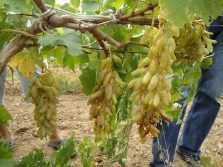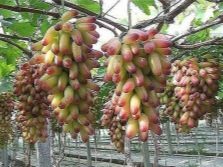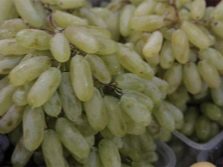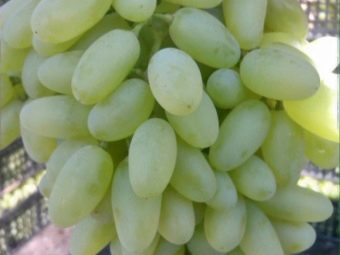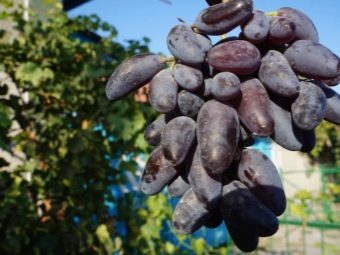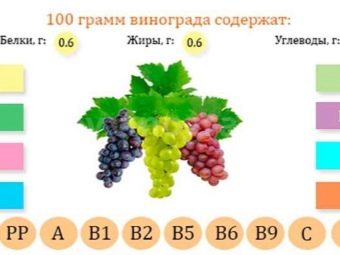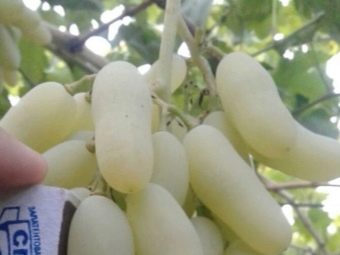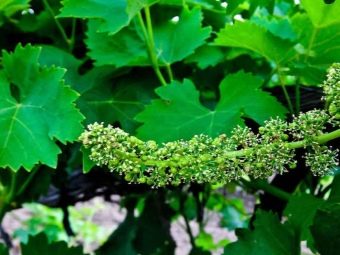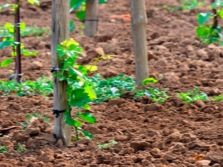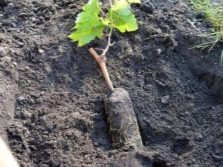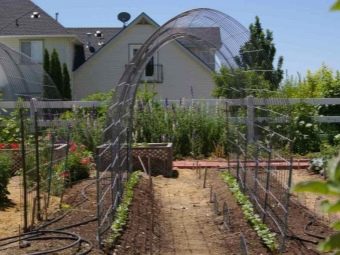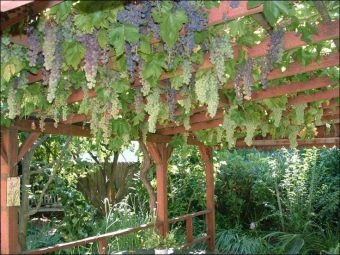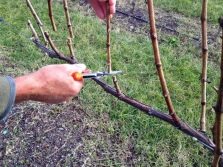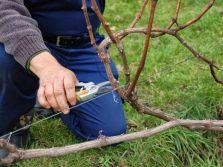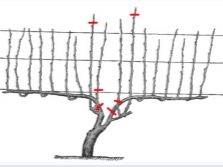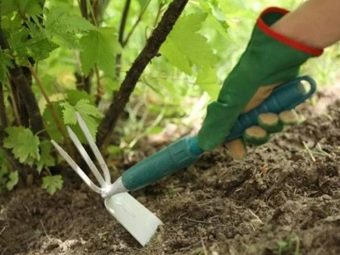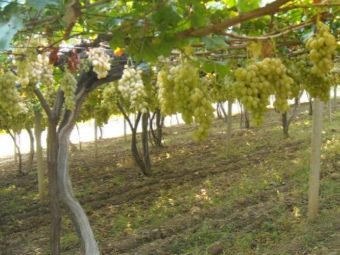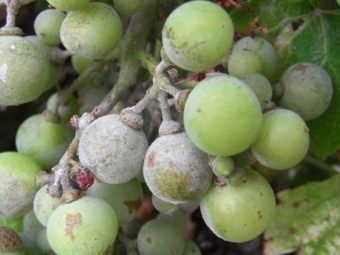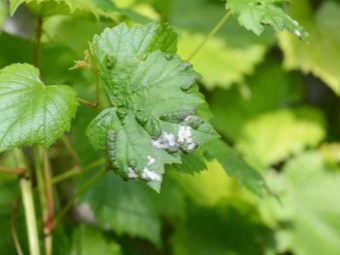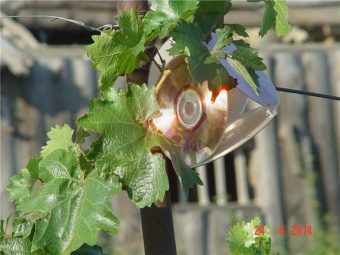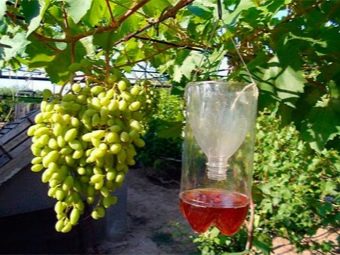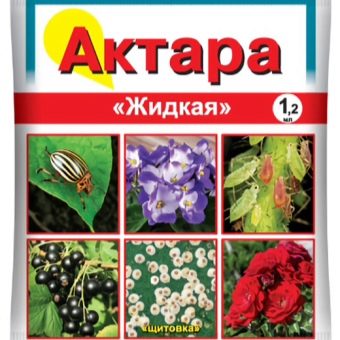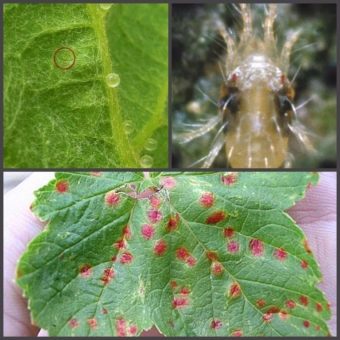Grapes "Ladies Fingers": features and cultivation
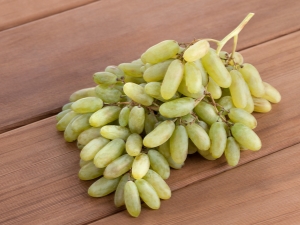
Initially, the grape was considered a wild plant, but after its cultivation, many hybrid species were bred, having their own taste and growing characteristics. Such varieties include the well-known grapes from the seventeenth century, which came from Central Asia and received the nickname “Lady Fingers” from people because of the elongated-oval shape of the berries, which are both black and white. It is about this variety and will be discussed in our article.
Variety description
This variety belongs to the species with large clusters, which are especially large in “Lady Fingers” in black. Quite free and branchy fifty centimeter long and twenty six centimeter wide clusters have the shape of a cone. On average, their weight is half a kilogram. The variety is represented by two variations: with and without stones.
It should be noted that the oblong berries of the mentioned varieties are not only black, but also light green and yellow-pink. In the South Asian republics, "Lady Fingers" styled "Husayne White" or "Husayne Black." Black, in contrast to white is the largest, the weight of a single berry can exceed 7 grams, and its length is more than 4 centimeters. The rich sweet taste has a slight sourness. The thin skin of the berries is lightly covered with a protective waxy bloom. Due to the marked signs, the variety fell in love with a pleasant taste, an aesthetic look, which retains its shape for a long time without external influence.
The grade "Lady fingers" is not only attractive appearance, but also a well of useful substances. Berries have many useful vitamins for the human body. Thanks to potassium, grapes prevent the occurrence of heart-related diseases. Normalizes sleep and relieves swelling. In addition, black grapes have antioxidants that prevent the appearance of malignant tumors.
Despite the numerous benefits, many limit themselves to the use of this berry because of its relatively high caloric content. However, "Ladies Fingers" after Kishmish has the lowest calorie content: Kishmish - 40 kcal, "Ladies Fingers" - 60 kcal. Calorie, for example, red grapes is 69 kcal.
Advantages and disadvantages
The main advantage of the variety is undoubtedly its taste, recognized by tasters as a sample of true grapes. By creating the necessary conditions for plant growth, you can achieve high yields. The vine possesses rapidly regenerating properties, which makes it possible to form a plant without fear of destruction. Bright green three-fingered or five-fingered foliage of small forms has a slightly elevated circumference. Veins on the inside of the sheet have a small pile. Flowers varieties bisexual, which contributes to rapid pollination.
The main disadvantage is poor frost resistance and whimsicalness to climatic conditions. The variety has a poor immunity to disease, so you have to be on the alert throughout the season. In addition, he has a middle term maturity. Because of the capriciousness to the weather conditions, it is undesirable to start growing the variety to novice gardeners. Middle Russia due to the lack of heat will also be an unsuitable place for cultivation. Fruiting is also considered late: in most varieties in the third year, and “Lady's fingers” allow harvesting only five years after planting.
Landing rules
Before planting a variety it is important to choose the right place. It should be the sunny side. The presence of a number of buildings of any kind whose shadow will overlap the light should be avoided. Buildings or the presence of adult trees are desirable on the north side, as they are able to keep the winds of the north winds. For young shoots are dangerous drafts. The presence of a number of groundwater will be only a plus, providing a constant feed to the plant.
Seedlings should be immersed in the ground to a depth of about 1.5 meters. The pit should be filled with compost and fertilizers, including, in addition to minerals, superphosphate and nitrogen in a small amount. Allowed both spring and autumn planting. Plants located close to each other will limit their growth, so a distance of about 0.5 meters should be left between them.
Since grapes are liana plants, they need support (trellis).The tapestry can be made of ordinary metal or wooden posts, to which the vine is tied. This type of garter is effective if the plant is young, not reaching a considerable height. At a later stage of development, it would be more expedient to organize a garter, for example, to the roof of the veranda. From the installed posts, the rope or wire is stretched over which the vine goes. As a result, you will receive an arch, from the dome of which clusters of grapes will hang.
If there is a possibility, then landing on the pergola (shed), resembling a gazebo, would be the best option. Keep in mind that if your garter is connected with wooden structures, it must be treated with an antiseptic to prevent the appearance of rot, which can ruin your plant.
Care
As noted above, "Ladies Fingers" - this is fastidious to the climate and care grade. If you compare the care of varieties with white and black berries, then white will be pickier than black. Firstly, it is more sensitive to cold. Secondly, drafts, insufficient watering and lack of solar heat can lead to a complete loss of the crop.
To yield high, the plant must be formed. It is not necessary to be afraid to cut off excess, because the variety is quickly restored, new shoots appear almost immediately. It is more expedient to do trimming on 15 eyes (formation between a kidney and a leaf), leaving several adult sleeves (perennial branches). Grapes - a plant with rapid growth, due to which not all shoots form inflorescences. Uncircumcised excess shoots are able to waste the energy of a plant in vain. Grapes, like all other plants, will produce much better fruit if the unwanted shoots are removed, and shrub clusters that are not in contact with the vine are spaced apart from each other.
Grapes - this is not a bush, trimming the top of which gives splendor. Here it is important not to hurt, so it is better to start removing the extra vine from below, leaving shoots with two to three eyes, and from above form arrows with 14 or 15 eyes. This amount is due to low resistance to cold. Any excess can be removed during the spring debris. This is usually a dry vine.
The "Lady Fingers" best yield a kidney crop, located above: above the fifth eye. This should be considered first when pruning.
Removing weeds, digging up the site annually and hilling the soil will have a beneficial effect on your plant, as it will enrich the soil with oxygen and prevent small insects from raiding. Spring pruning dried bark and vines allows you to rejuvenate your vineyard.
With proper care of an experienced gardener, "Lady Fingers" will be a garden decoration.
Diseases and pests
The variety is not resistant not only to sudden temperature changes, but also vulnerable to numerous diseases and pests. For example, in a rainy summer accompanied by mists, the plant, like its berries, can fester. This is the so-called mildew (downy mildew). If you see a rotting berry, then it must be removed immediately, until the disease has spread to the others. It is worth noting that ripe berries do not rot because of mildew, but become sour to the taste. The disease destroys all the leaves, inflorescences, which leads to a significant decrease in yield.
Heat, accompanied by high humidity, can cause the spread of oidiumoma (powdery mildew). The disease begins to manifest itself on branches located close to the ground: gray spots of a dark shade and a mold-like patina appear. Rising higher, oidium amazes inflorescences that have not even had time to open. The berries stop growing, dry out. All noted troubles are accompanied by a specific taint of rot.
To prevent the appearance of decay, for the prevention of fall, it is necessary to remove dead wood. In the autumn, before the onset of cold weather, it is advisable to treat the soil with iron sulfate, and in spring and summer - Bordeaux solution mixed with colloidal sulfur. Plan to break the vineyard should be in a well-lit and quite ventilated place.
At the first occurrence of any browning on the leaves, it is necessary to immediately begin treating the plant with manganese solution or colloidal sulfur. The vineyard, like many plants, needs annual feeding. For the development of immunity to diseases, you can enrich the plant with potassium, phosphorus and trace elements.
In addition to diseases, the vineyard may be vulnerable to birds and insects, to protect against which the following methods will be good:
- wind "scarers" (the presence of sound effects will be only a plus);
- towering above the plant structure, pasted mirror;
- thin net covering the dome.
For scaring wasps, traps are used in the form of honey-water tarred containers. The solution is prepared at the rate of one teaspoon of honey per liter of water.
One more pest dangerous for the “Lady Fingers” variety can be called ticks and aphids. An abundant amount of the latter leads to the emergence of a disease such as phylloxera. Deciduous phylloxera is manifested in the manifestation of warty formations on the lower part of the leaf. The most dangerous root phylloxera, which, firstly, is difficult not to notice in time, and, secondly, it is capable of completely ruining the plant. After the launched form of phylloxera, it is difficult to grow grapes on a diseased site for twenty years.
Colorado beetles, cicadas, leaflets, thrips cause a lot of trouble and hassle, but they are larger than aphids, and therefore easily recognizable, which allows you to start the fight on time. For the destruction of these pests use irrigation with various drugs: "Aktara", "Karate", "Aktellikom" and others (full consultation can be obtained in agricultural stores).
It is important to know that sprays for treatment are made more often than for prevention. But both in the first and in the second cases, they should be stopped for three weeks before harvest
Reviews
According to gardeners and experts, the appearance and taste of the variety, of course, are attractive. But "Ladies Fingers" are fastidious about weather conditions and transportation. Attractive forms are preserved with a sufficient number of sunny days in the summer. If the summer was rainy and cold, then the berries that appear with difficulty can crack. In place of the cracks often appears mold.
It cannot be said that only good sunlight is needed for a good harvest. The lack of moisture is also capable of destroying the next crop in the bud. Thus, in the hot summer it is necessary to provide regular and abundant watering. Due to a certain fragility of the variety it is rather difficult to transport. Having a weak comb (the thread connecting the berries and the brush), the berries do not hold in clusters. Their loose skin is also easily deformed. If the delivery of large-scale sizes does not interest you, then for your own enjoyment the removal of “Lady fingers” is very justified.
Video review of grapes "Ladies Fingers" see below.

